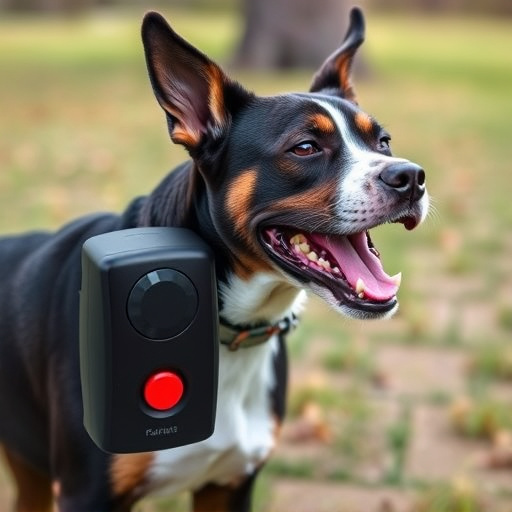Ultrasonic repellents, using safe 22-50 kHz frequencies, effectively control dogs without harm. Strategically placing these devices near problem areas teaches dogs to avoid them. Regular use reinforces the learning process. Easy to install and maintain, these systems are a humane, preventive solution for dog control, deterring unwanted canine visits before they occur.
“Unleash a humane and effective solution for canine control with the latest innovation—the Animal Control Sonic Repellent System. This technology utilizes safe ultrasonic frequencies to deter dogs without harm, making it an ideal alternative to traditional methods. Our article guides you through understanding the science behind ultrasonic repelents, their safe applications for dog behavior management, and practical tips on implementation. From installation to training, learn how this system can transform your space.”
- Understanding Ultrasonic Repellents: How They Work and Safety Considerations
- Targeting Dog Behavior: Effective Use of Sonic Repelents for Canine Control
- Implementing the System: Installation, Maintenance, and Training Tips
Understanding Ultrasonic Repellents: How They Work and Safety Considerations
Ultrasonic repellents have gained popularity as a non-lethal method for managing and controlling animal behavior, especially in urban settings where traditional control methods may be less desirable. These devices emit high-frequency sound waves that are inaudible to humans but can effectively deter animals like dogs and cats. The technology works by exploiting the auditory system of animals, creating a sensation of discomfort or even pain when they detect the ultrasonic signals. This response encourages them to avoid the treated area.
When it comes to safety, it’s crucial to understand that not all ultrasonic frequencies are created equal. For dog control specifically, using safe ultrasonic frequencies is essential. Devices designed for this purpose operate within a range that is harmless to dogs and humans. Frequencies typically range from 22-50 kHz, well above the human hearing range. Properly designed and tested systems ensure these sounds do not cause physical harm or discomfort. Always opt for products certified by reputable organizations to guarantee their effectiveness and safety.
Targeting Dog Behavior: Effective Use of Sonic Repelents for Canine Control
Targeting dog behavior with sonic repellents offers a humane and effective solution for canine control. These devices emit high-frequency sound waves that are unpleasant to dogs, encouraging them to avoid specific areas or behaviors. However, it’s crucial to use safe ultrasonic frequencies specifically designed for dog control, typically ranging from 22 to 50 kHz. Frequencies outside this range may be harmful to human hearing and have varying effects on different animals.
Proper placement and consistent use are key to the success of sonic repellent systems. By strategically positioning the devices in areas where dogs tend to congregate or exhibit unwanted behavior, such as near trash cans or entry points, you can train them to associate these spaces with an unpleasant sensation. Regular use reinforces the learning process, ensuring that the repellents remain effective over time.
Implementing the System: Installation, Maintenance, and Training Tips
Implementing a Sonic Repellent System for animal control, particularly tailored for dog deterrence, involves careful consideration and adherence to best practices. Installation is straightforward and can be done in various settings, from backyards to public spaces. The key lies in strategically placing the devices to maximize coverage while ensuring they are out of reach for both pets and people. Mounting them on walls or posts, away from residential areas, helps maintain safety and avoid false triggers.
Maintenance is minimal but crucial. Regularly check battery life and replace them as needed. Since these systems operate on safe ultrasonic frequencies, there’s no risk of harm to humans or pets when used correctly. Training users involves explaining the system’s operation, setting expectations, and ensuring proper usage. It’s important to emphasize that these devices are most effective as a preventive measure, deterring dogs before they encroach into unwanted areas.
Animal control sonic repellent systems offer a safe and effective solution for managing dog behavior. By employing ultrasonic frequencies specifically tailored for canine deterrence – without harm or discomfort – these systems provide a humane alternative to traditional methods. With proper installation, maintenance, and training, they can significantly improve outdoor spaces, fostering a peaceful environment for both residents and pets alike.
